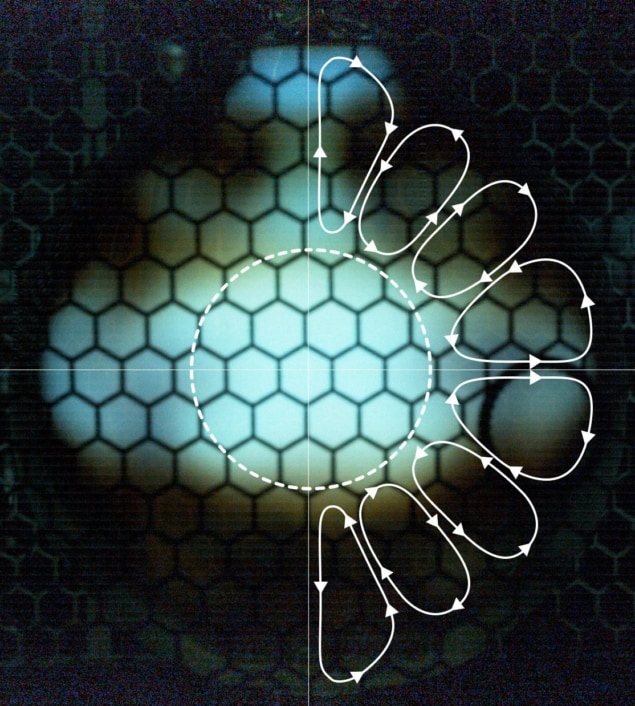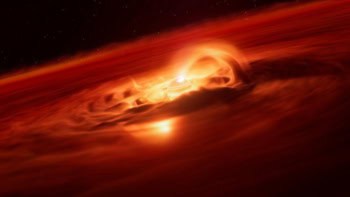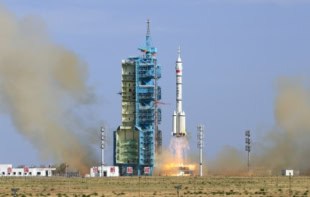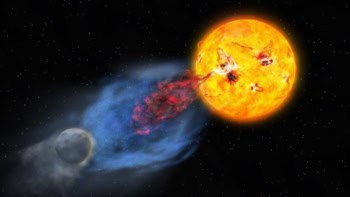
Sound waves have been used in the lab to mimic the role that gravity plays in driving convection in huge rotating bodies such as stars and planets. The new experiment was created by Seth Putterman and colleagues at the University of California Los Angeles and it allowed the researchers to create gravity-driven circulation patterns.
Convection within rotating planets and stars plays an important role in the internal dynamics of these huge objects. Here on Earth, for example, convection in the outer core is believed to create our planet’s magnetic field and convection in the atmosphere drives weather patterns. In the Sun, convection is believed to be responsible for creating solar flares.
Some aspects of stellar and planetary convection are difficult to simulate using computers. Instead, researchers have tried to create small versions of this convection in the lab. However, it has proven challenging to create a radial force with the appropriate strength to play the role of gravity. Indeed, some researchers have gone so far as to do their experiment on the International Space Station to try to create a useful force.
Microwave heating
Back on Earth, Putterman and colleague’s new experiment uses a rotating spherical bulb that is filled with a weakly ionized sulphur gas. The gas is heated using microwaves and this causes the gas at the centre of the bulb to be warmer than the cooler and denser gas at the edge of the bulb.
The team then modulate the microwaves to create sound waves inside the bulb. As the sound waves pass through the gas, the density gradient creates a radial force that tends to pull the cool gas at the edge of the bulb towards the centre – just as gravity pulls a fluid towards the centre of a planet.

Convection cells the size of Texas dazzle with clarity on the Sun
As the bulb rotates, the inward moving cool gas is replaced by warmer gas that moves towards the edge of the bulb. This results in the formation of a pattern of convection cells surrounding the bulb’s axis of rotation. By carefully tuning their setup, Putterman’s team could generate distinctive convection patterns, featuring cells of circulating fluid that strongly mimic the patterns that are believed to exist within stars and planets.
By adapting this technique further, the team hopes that future studies could simulate gravity-driven convection with far greater accuracy than existing setups – helping them to better understand the vital role that convection plays in systems with large-scale circulation.
The research is described in Physical Review Letters.



